You can contact LEARNZ, part of CORE Education, at:
Postal Address:
PO Box 13 678,
Christchurch 8141,
New Zealand
Kia ora koutou,
It was an early, wet and windy start to the day this morning. Let’s hope the weather improves when you head out to the smart motorway construction site tomorrow!
Meeting with the Mayor
You were lucky enough this morning to meet the Mayor of Wellington City, Celia Wade-Brown. It’s not every day that you start a field trip off with an introduction to the Mayor of our capital city! Mayor Wade-Brown was very welcoming. She was especially drawn to young Egbert, much to his delight! That being said, Mayor Wade-Brown actually gave me her cup of coffee – perhaps I looked a bit jaded from the early start?
Mayor Wade-Brown spoke about how one of her priorities is to enable people to make smart transport choices, and that the smart motorway system will help with this. In fact Mayor Wade-Brown gives a good summary of the benefits this smart motorway system will bring to the city, so make sure you watch the video.
NZTA Regional Office
From the council offices you made your way to the NZTA Wellington Regional Office. Here you met transport planner Jo Draper. Jo spoke about the importance of stakeholders in the smart motorways project. A stakeholder is anybody who can affect or is affected by an organisation, strategy or project. Whether they are providing such things as funds or consents for the project, stakeholders can “make or break” a project.
Ngauranga to Aotea Quay site office
From the NZTA regional office you drove north to Ngauranga. This is where the smart motorway project office is located. Walking into the office you are faced with a selection of lollies at the front desk (visitors help yourself!) and a small xylophone which acts as a bell if the front desk is unattended. Now that’s what I call a welcome!
Steve Beddow, the smart motorways project manager, spoke here about planning and keeping track of such a large project. Essentially, large projects like this are broken down into stages or smaller parts to help make it more manageable. Steve spoke about a “gantt chart”. These charts give more details of the stages, as well as the time schedule in which each stage needs to be completed.
Steve also talked about the challenges faced when working on a functioning motorway. Because the motorway is in use every day, careful planning needs to happen with regards to when certain work can be carried out. So for instance there are no restrictions for motorists put in place during the morning and afternoon peak traffic flows. No workers can drive into or out of the work site during these times either. This is so there are minimal disruptions to motorists during these times. Much of the work is therefore carried out at night when there is little use of the motorway.
Audioconference to finish
Finally today we had the first of our audioconferences for the field trip. Tauranga Intermediate asked the questions and Philippa Ross-James was filling in for Glen Prince with the answers. Go to Audioconference Recordings if you missed out on the live version.
And so ends the first day of the field trip. Tomorrow you will have the opportunity to get up close to some of the actual construction. I am wondering how this smart motorway is going to influence roading in the future – maybe Thursday will provide me with some ideas about that.
Catch you in the morning,
Andrew
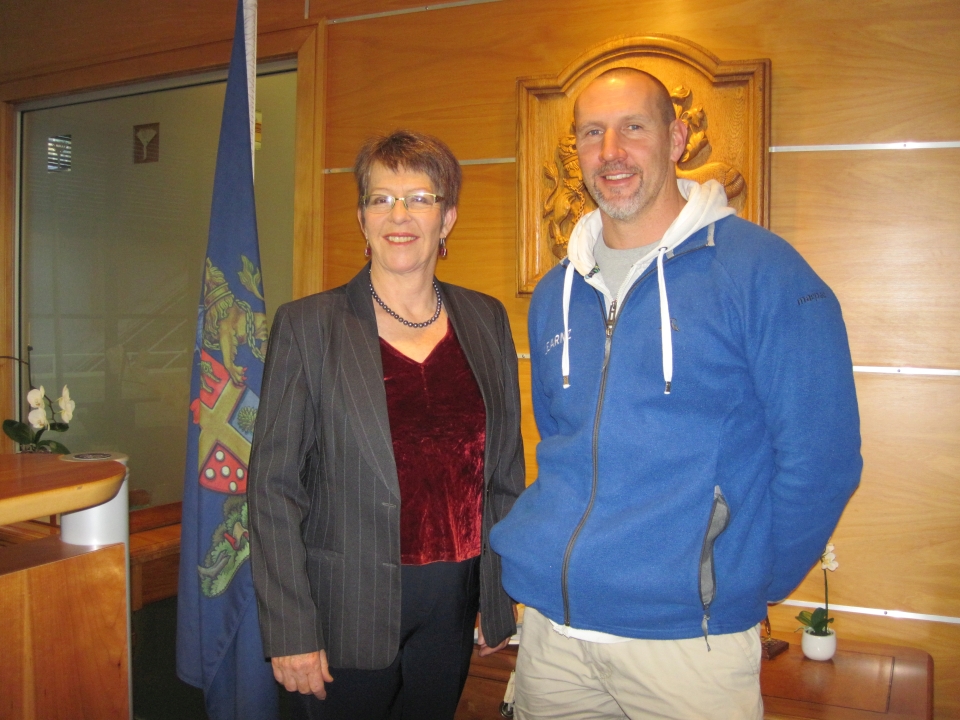
Andrew with Wellington City Mayor, Celia Wade-Brown. Image: LEARNZ.
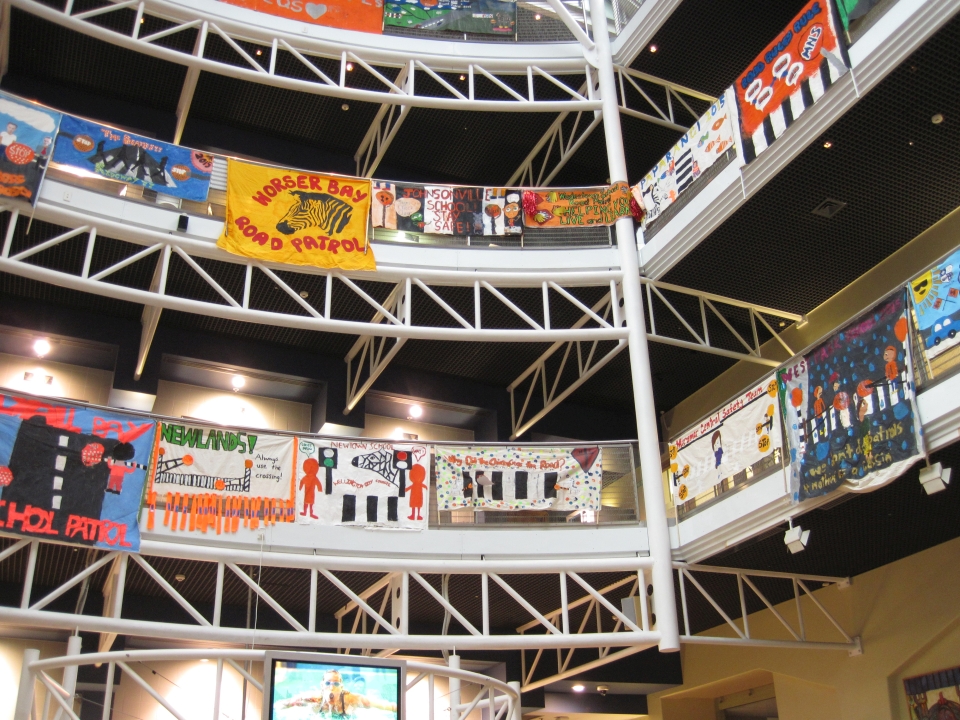
Wellington school banners with road safety messages inside the council building. What would your message say? Image: LEARNZ.
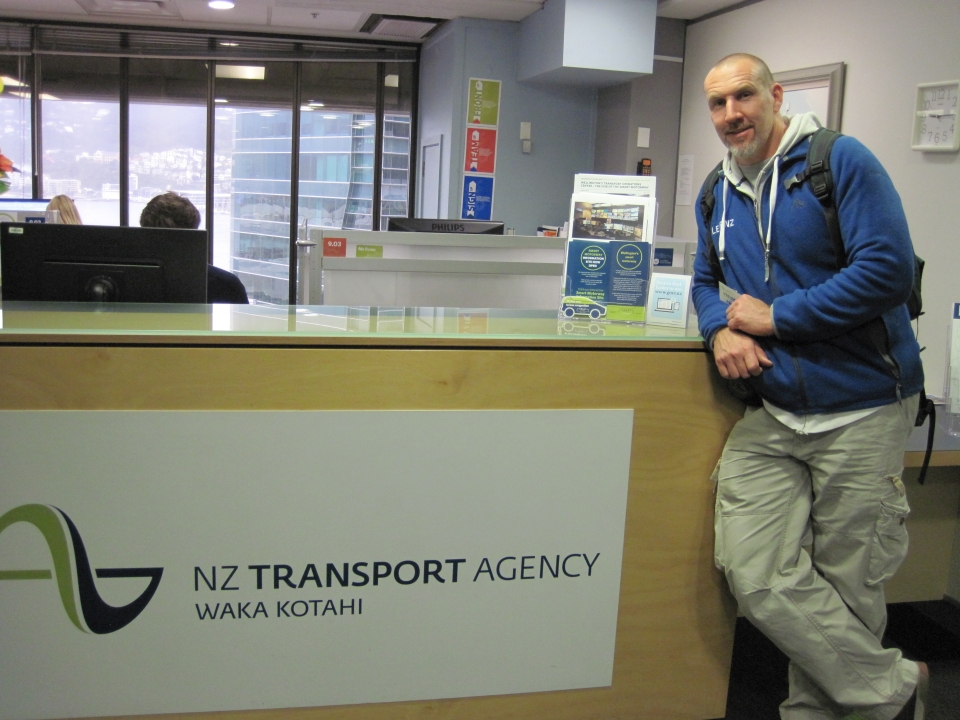
Andrew signs in as a visitor at the NZTA Wellington Regional office. Image: LEARNZ.

Andrew and Egbert with transport planner, Jo Draper. Image: LEARNZ.

We've come a long way with roading in New Zealand. Believe it or not this is an old photo of part of the Ngauranga Gorge road! Image: LEARNZ.
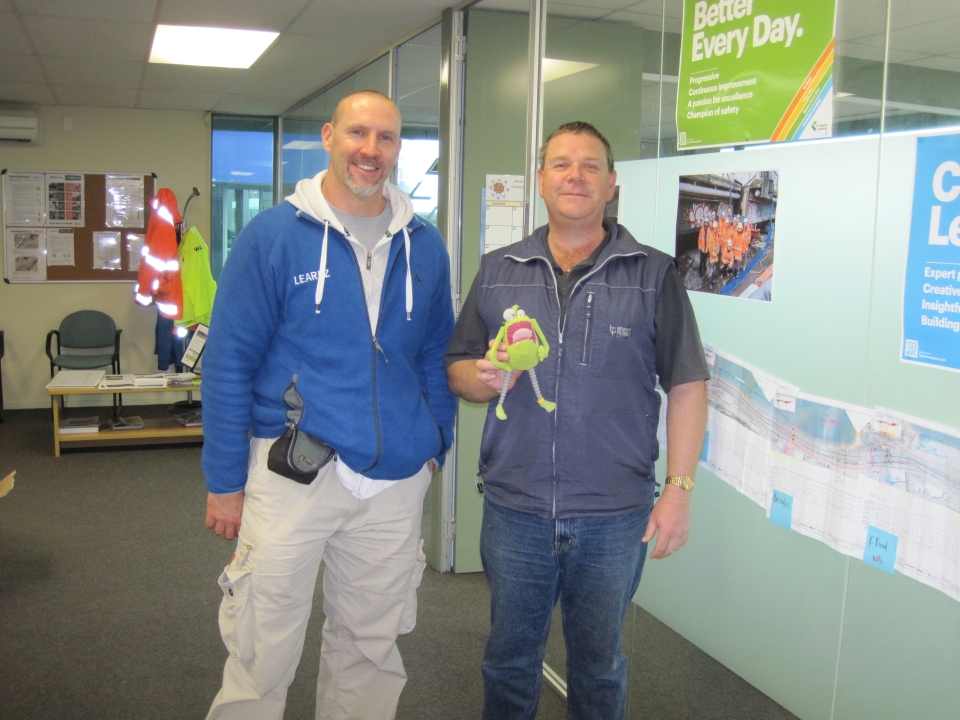
Andrew and Egbert with smart motorways project manager, Steve Beddow. Image: LEARNZ.
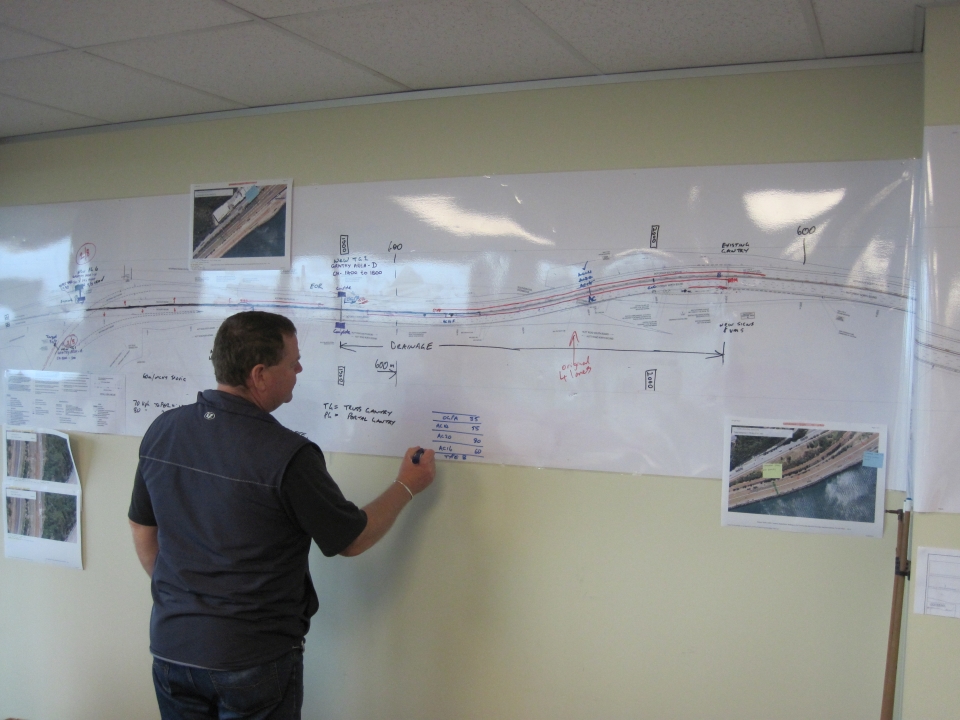
Steve Beddow adds some updates to his project wall planner. Image: LEARNZ.